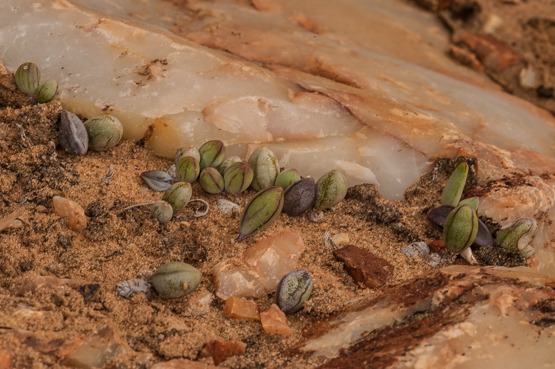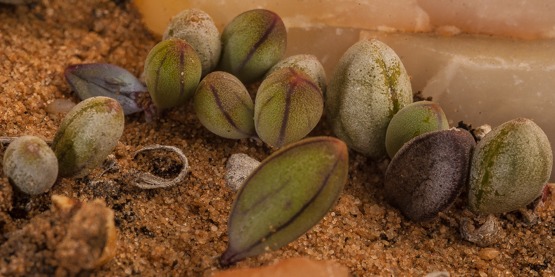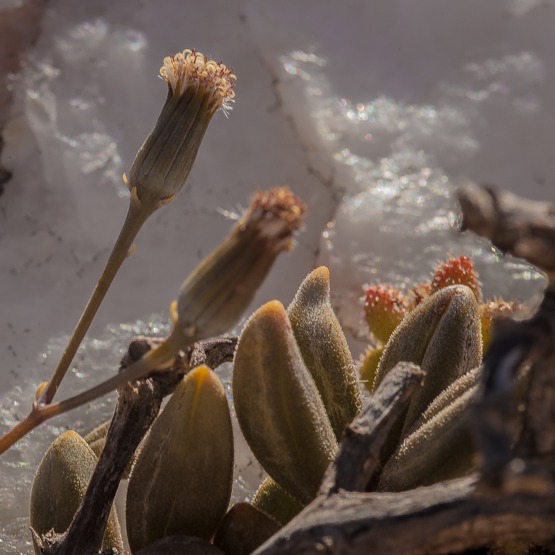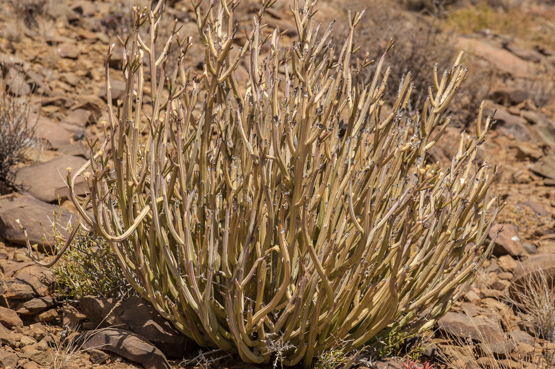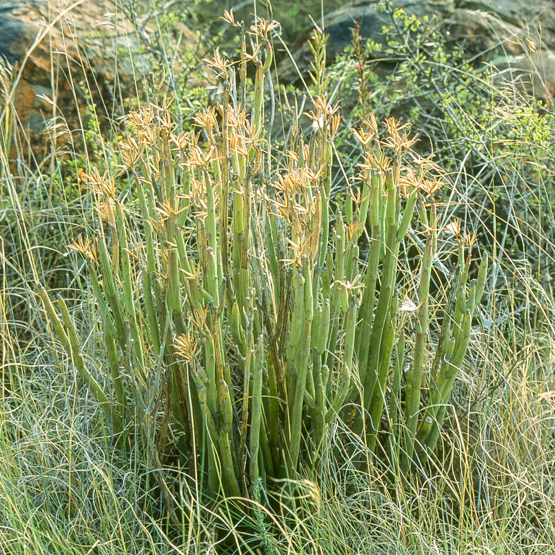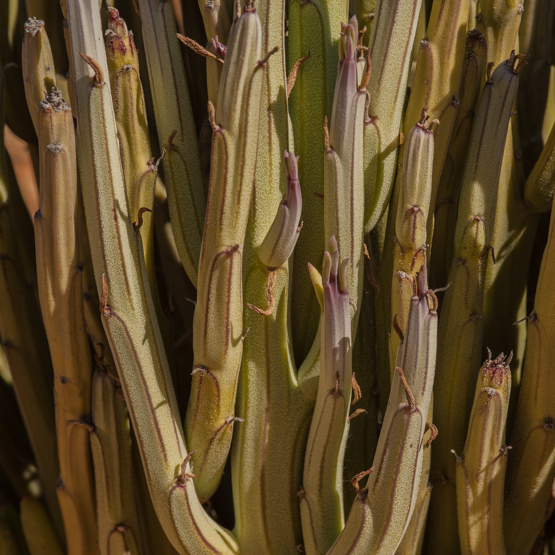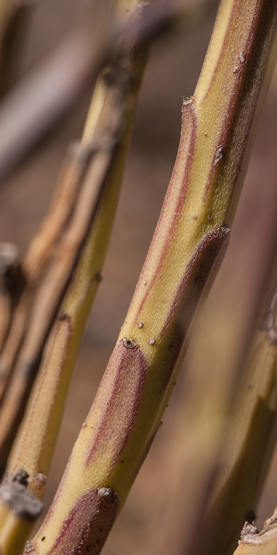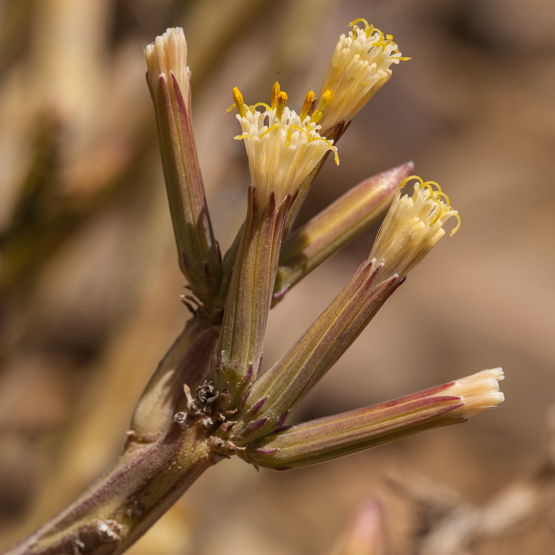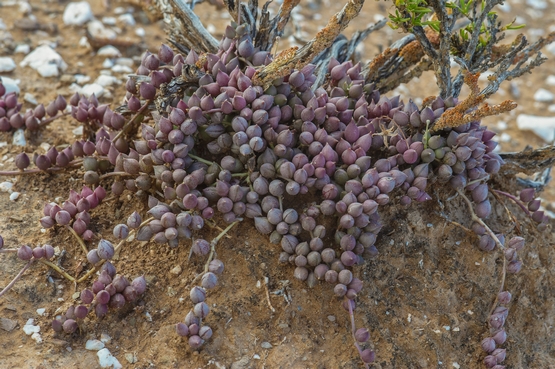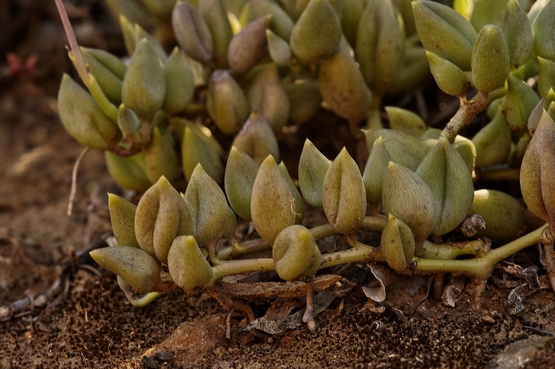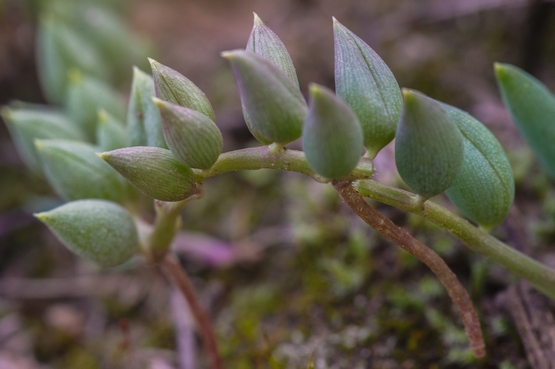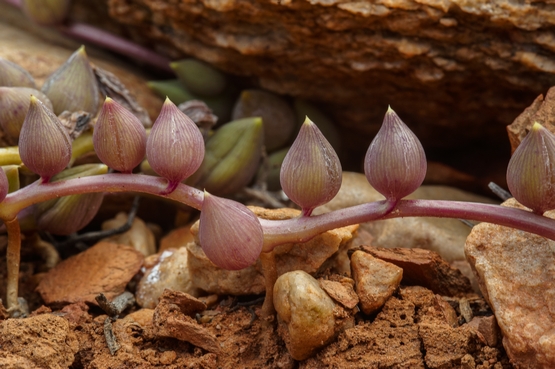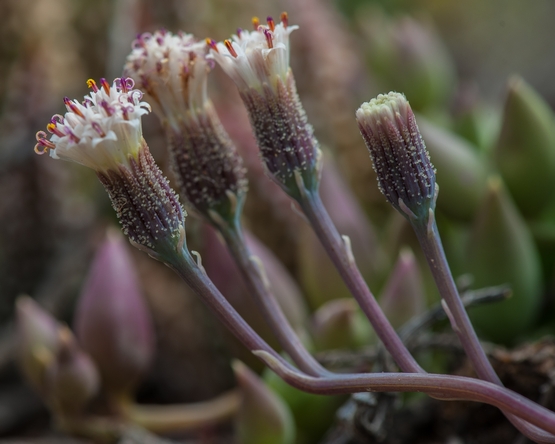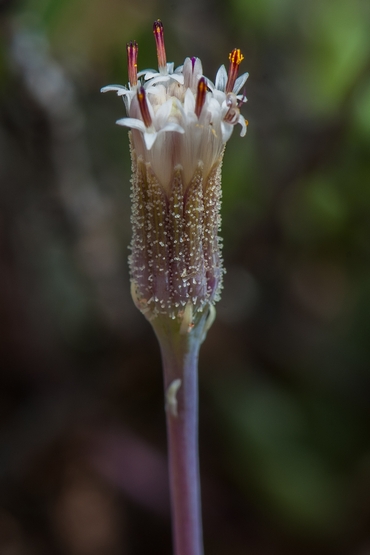This interesting little plant from southern Namibia and Namaqualand (as far south as Bitterfontein), comes under a variety of names: Senecio sulcicalyx, S. klinghardtianus, S. iosensis, Othonna/Senecio/Kleinia pusilla (pusillus).
It has a preference for rock crevices.
A great part of the plant is underground with rhizomes and tuberous roots.
The branches are up to 5 cm long. The leaves are 1 -2.5 cm long and 0.7-1.2 cm wide, sometimes shortly hairy.
Although the flower heads are usually white to mauve, in certain forms they are yellow; they appear from February to July.
